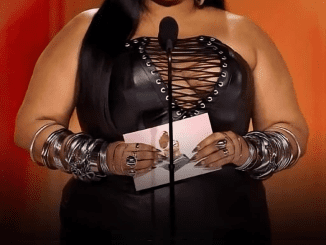Let’s be honest—we all love a good challenge that pushes our brain just a little beyond the ordinary. And what better way to do that than a classic “spot the difference” puzzle? Today’s visual game looks simple, but it hides 15 clever changes between two seemingly identical kitchen scenes. The question is: how many can you find without peeking?
Take a closer look at the two images. A woman is preparing something in her kitchen, surrounded by utensils, mugs, bowls, shelves, and jars. At first glance, everything seems the same. But if you look more carefully, you’ll see a number of small differences sneakily tucked into the details.
Why These Puzzles Are Trickier Than You Think

What makes spot-the-difference puzzles like this one such a fun mental exercise is that they challenge your observation skills. The changes are often subtle—an object might be missing, colors may differ, or a shape might be slightly altered. The brain naturally fills in gaps and assumes symmetry, which is why even attentive viewers can easily miss obvious changes.
Some of the most common mistakes people make when attempting this type of visual puzzle include:
- Rushing through the images without focusing on each section
- Concentrating only on the central figures and ignoring the background
- Overlooking color or size differences
- Skipping objects that seem “insignificant”
That’s why it helps to slow down, divide the picture into sections, and approach the puzzle methodically. Ready to learn how? Let’s walk through it together.
How to Solve the Puzzle Step by Step
A great way to approach a visual difference puzzle is to break the image into smaller zones—top left, top right, middle, and bottom areas. By focusing on each zone one by one, you’ll notice changes that would otherwise slip past your radar.
Video : Find 15 differences
Here’s a breakdown of the 15 differences that have been circled in the image:
- Hair Curl on Forehead – The woman in the top image has a little curl on her forehead. In the bottom image, it’s gone.
- Face Expression – The woman’s mouth is open in the top image (she looks surprised). In the bottom image, she’s smiling with her mouth closed.
- Wall Shelf Color – The shelf above the woman is blue in the top image and purple in the bottom image.
- Red Bottle Missing – In the top image, there is a red bottle behind her right shoulder. In the bottom image, it’s missing.
- Shelf Balls – There are two round decorative items on the upper-right shelf in the top image. They are missing in the bottom image.
- Cup Design – The cup on the right-hand shelf has a heart in the top image but has a floral design in the bottom image.
- Number of Shelf Pegs – The top image shows 5 pegs on the shelf. The bottom image has only 4.
- Fruit in Bowl – The bowl in the top image has apples and bananas. The bottom image has white eggs instead.
- Chair Handle – The right-side chair in the top image has blue bars. In the bottom image, they’re missing.
- Towel Under Bowl – There is a red towel under the blue bowl in the top image, but none in the bottom image.
- Right Arm Shadow – The top image includes a sleeve shadow under her right arm that’s missing in the bottom image.
- Apron Detail – There’s a missing strap design on the apron in the bottom image that’s visible in the top.
- Microwave Panel – The microwave in the top image has extra black buttons. The bottom one has fewer.
- Jar Lid Color – One of the jars on the left-hand side has a yellow lid in the top image and a white lid in the bottom one.
- Blue Mug Missing – A blue mug sits next to the jars in the top image. In the bottom image, it’s disappeared.

Tips to Master These Types of Puzzles
If you struggled to find all the differences, you’re definitely not alone. These puzzles are designed to mislead your eyes and test your patience. But don’t worry, here are a few tricks to help you improve:
- Start from the top and work your way down to make sure you don’t skip any details.
- Use your finger or cursor to compare matching zones in each image.
- Zoom in if you’re working on a digital screen—some differences are extremely subtle.
- Take short breaks to reset your visual focus and come back with a fresh perspective.
Why These Puzzles Are More Than Just Fun
Aside from being fun and mildly addictive, puzzles like these are actually great for your brain. They enhance visual attention, promote concentration, and even improve short-term memory. In a world full of distractions and fast scrolling, these puzzles help you slow down and focus.
They’re also a fantastic bonding activity to do with family and friends. Challenge your kids or your partner to see who can spot all the differences the fastest—it’s a great screen-time alternative that still stimulates your mind.
Share Your Results and Keep the Challenge Going
Now that you know the answers, we challenge you to share this puzzle with a friend or post it online and see how long it takes others to spot all 15 differences. Were you quicker than them? Or did you get stuck on that one annoying object that kept evading you?
Video : Spot The Differences! How Sharp Are Your Eyes?
Drop a comment below with how many you got right without checking the solution. And if you enjoyed the challenge, don’t forget to try more visual brain teasers to keep your observational skills sharp.
Final Thoughts
Spot-the-difference puzzles are more than just a fun pastime—they’re an excellent way to sharpen your mind, practice focus, and appreciate the details around you. Even the tiniest visual elements can make a big difference, and spotting them feels oddly satisfying.
Whether you found all 15 differences or only a few, what matters is that you gave your brain a workout and had a little fun in the process. Keep challenging yourself with more puzzles like this, and you’ll be amazed at how quickly your observation skills level up.
Stay curious, stay sharp—and happy spotting!


